SpaceX Raptor
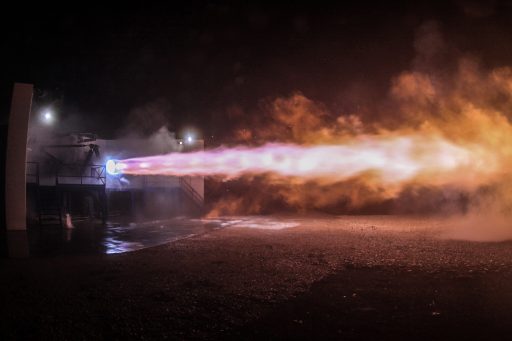
Raptor is a next-generation liquid rocket engine developed by SpaceX to power the company’s Interplanetary Transport System that aims to establish an operational cargo and crew architecture for missions between Earth and Mars, and possibly beyond – starting in the 2020s.
The dimensions of SpaceX’s Interplanetary Transport System (ITS) are unprecedented in the history of spaceflight, calling for a payload mass to the surface of Mars in the range of 450 metric tons.
Achieving this ambitious goal requires massive launch vehicle with a cluster of high-powered engines, a propulsion system for operation in deep space and a propulsive landing and ascent architecture for operation in the Martian atmosphere. All this will be realized by SpaceX’s Raptor engine family.
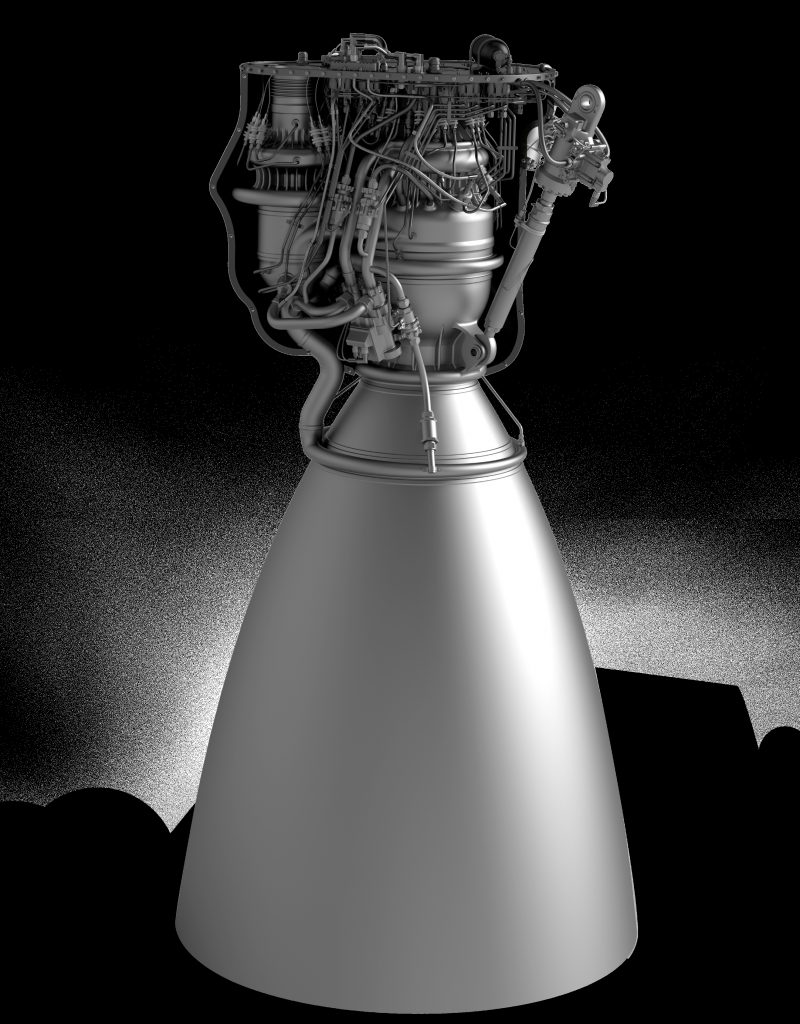
SpaceX CEO and Chief Designer Elon Musk set his goals to Mars from the very beginnings of the company in 2002, initiating a stepwise process beginning with uncrewed flights of the small Falcon 1 before upgrading to commercial missions with the larger Falcon 9 to be followed by crewed flights to near Earth space and heavy-lift missions of the Falcon Heavy including the first precursor missions to Mars.
However, missions to explore and settle on Mars will require a much more powerful rocket with several times the thrust of SpaceX’s Falcon Heavy.
Raptor represents a family of highly reusable methane-fueled staged combustion engines that will power SpaceX’s super-heavy-lift launch vehicles for the exploration and colonization of Mars. According to Musk, ITS will incorporate a high-degree of reusability, broadening the technologies pioneered by the Falcon 9 rocket and its reusable first stage.
Raptor, first presented in 2009, started out as a low-priority project to develop a cryogenic upper stage engine powered by Liquid Hydrogen and Liquid Oxygen. By 2012, SpaceX had shifted direction in its planned propulsion architecture and Raptor’s role was broadened to become the company’s engine of choice for a large vehicle capable of transporting humans to Mars and beyond.
Raptor Specifications
The SpaceX Raptor is a cryogenic staged combustion rocket engine intended to power the high-performance lower and upper stages for the Interplanetary Transport System. It has more than three times the thrust of SpaceX’s Merlin 1D engines propelling the Falcon 9 and Falcon Heavy rockets and steps away from a Kerosene-based propellant.
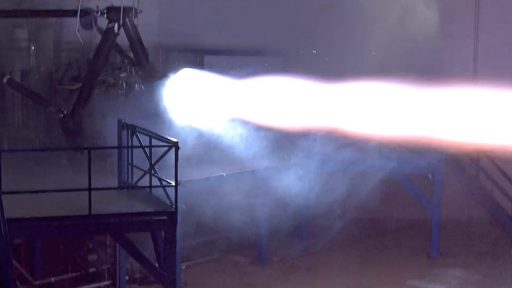
Raptor consumes a combination of Liquid Methane and Liquid Oxygen in a Full-Flow Staged Combustion Cycle (see below).
The highly-reusable engine makes use of concepts first demonstrated on the Falcon 9 and Falcon Heavy rockets including deep cryogenics, cooled below their boiling point to increase their density and thus load the limited tank volume with a greater mass of propellant.
Like SpaceX’s Merlin engines, at least two version of Raptor will be available – one for use on the first stage booster of the ITS launch vehicle and one optimized for operation in vacuum for operation outside Earth’s atmosphere for the interplanetary insertion and in the ambient Martian atmosphere for retropropulsion ahead of landing.
Raptor’s design was revealed in September 2016 during an address given by Elon Musk at the International Astronomical Congress, outlining SpaceX’s Mars transport architecture.
Raptor Specs – Sea Level Version
| Designation | Raptor Sea-Level |
| Type | Full-Flow Staged Combustion |
| Propellant Feed | Multi-Stage Turbopump |
| Oxidizer | Sub-Cooled Liquid Oxygen |
| Fuel | Sub-Cooled Liquid Methane |
| Thrust (Sea Level) | 3,050 Kilonewtons |
| Thrust (Vacuum) | 3,297 Kilonewtons |
| Specific Impulse (SL) | 334 Seconds |
| Specific Impulse (Vac) | 361 Seconds |
| Chamber Pressure | 300 bar |
| Throttle Range | 20 – 100% |
| Ignition | Spark Igniter |
| Re-Start Capability | Yes |
| Area Ratio | 40 |
| Mixture Ratio | 3.8 |
| Flow Rate (Calc.) | 931.2kg/sec |
| LOX Flow Rate | 737.2kg/sec |
| LCH4 Flow Rate | 194kg/sec |
The expected performance parameters for the production Raptor engine call for a sea level thrust of 3,050 Kilonewtons (310 metric-ton-force) at a specific impulse of 334 seconds.
Raptor uses separate turbines and pumps on the fuel and oxidizer sides as part of a Full-Flow Staged Combustion Cycle (explained in detail below) with boost pumps delivering the necessary inlet pressure for the operation of the main turbopumps to create a combustion chamber pressure of 300 bar – the highest achieved by an operational liquid-fueled rocket engine.
The SL version of Raptor has a nozzle ratio of 40 creating a nozzle diameter on the order of 1.7 meters with an expansion optimized for operation in the discernible atmosphere since the booster will only operated at altitudes of a little over 100 Kilometers.
The baseline Raptor SL has a vacuum thrust of 3,297 Kilonewtons, per a basic calculation using the known Vacuum Impulse of 361 seconds. Calculations also yield a propellant flow rate of 931 Kilograms per second at a mixture ratio of 3.8 (according to earlier information shared by Mr. Musk), though tank sizes on the ITS vehicles imply a mix closer to 3.7.
Like the Merlin 1D series, Raptor can support extremely deep throttling with stable combustion possible down to 20% of the engine’s rated thrust. This enables the ITS Booster to fly flexible ascent profiles and actively throttle its engines on the way back to a propulsive landing, requiring active control of the vehicle’s thrust-to-weight ratio.
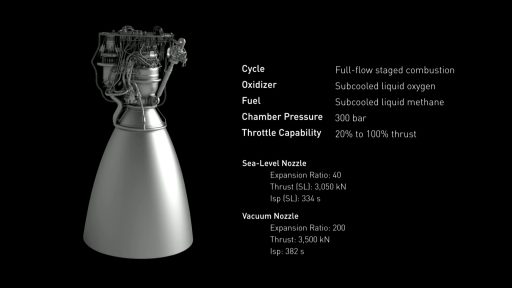
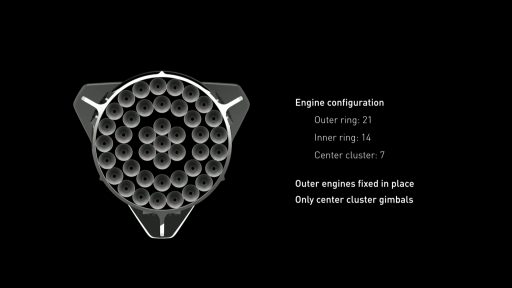
SpaceX kept quiet on the planned Thrust-to-Weight Ratio of the Raptor engine as it is still early in its development and the number naturally changes ahead of certification testing. However, it was stated that the expected TWR is better than that of the Merlin 1D engine which, at a T/W ratio of 198 (2015/16 Version), set a new record that shattered the previous best mark held by Russia’s NK-33 (137).
The creation of a high-pressure, methane-fueled, full-flow engine at a T/W ratio matching that of Merlin would represent a major milestone in space propulsion.
Because of Raptor’s excellent thrust-to-weight characteristics, SpaceX opted to go for a relatively low-thrust design with respect to the total launch thrust needed to send 450 metric tons toward Mars. The ITS Booster employs a cluster of 42 Raptor SL engines, generating a liftoff thrust of 127,800 Kilonewtons or 13,000 metric-ton-force.
The ITS Booster design calls for an outer ring of 21 engines and 14 Raptors forming an inner ring, all affixed in place with no gimbal capability which cuts tremendous mass from the engine bay. Only the seven engines clustered in the center of the Booster are gimbaled for vehicle control
For the climb to orbit, the Booster collectively fires all of its engines with multi engine-out capability. The boostback maneuver is shown to use half of the core’s engines while the atmospheric entry burn and the landing only use the inner cluster.
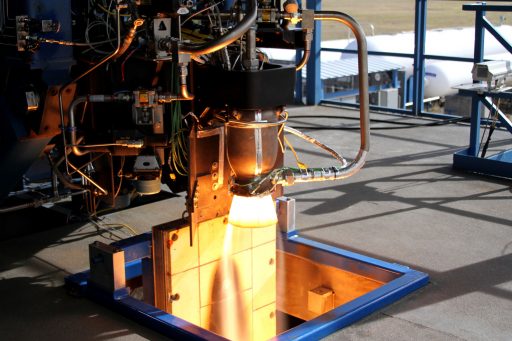
According to SpaceX, the Raptor manufacturing process will employ a great deal of additive manufacturing (3D Printing) – a technology introduced to engine manufacturing in recent years and proven on SpaceX’s Merlin and Super Draco engines.
3D Printing allows for a great reduction of production cost and enhances the thrust to weight ratio of the engine since it enables the production of lighter parts not possible through traditional methods.
An additional advantage of 3D printing engine components is the speed at which design changes can be implemented in new components to go through several iterations of the engine design in a short time span instead of spending weeks and months re-casting components based on the updated specifications.
Printed components on Raptor include propellant valves, turbopump parts and many components of the injector system.
Raptor Vac
| Designation | Raptor Vacuum |
| Type | Full-Flow Staged Combustion |
| Propellant Feed | Multi-Stage Turbopump |
| Oxidizer | Sub-Cooled Liquid Oxygen |
| Fuel | Sub-Cooled Liquid Methane |
| Thrust (Vacuum) | 3,500 Kilonewtons |
| Specific Impulse (Vac) | 382 Seconds |
| Chamber Pressure | 300 bar |
| Throttle Range | 20 – 100% |
| Ignition | Spark |
| Re-Start Capability | Yes |
| Area Ratio | 200 |
| Mixture Ratio | 3.8 |
| Flow Rate (Calc.) | 931.2kg/sec |
| LOX Flow Rate | 737.2kg/sec |
| LCH4 Flow Rate | 194kg/sec |
With the introduction of Raptor, SpaceX sticks with an overall design philosophy of simplification through commonality. Instead of developing a whole new engine for the rocket’s upper stage, the company adapts the Raptor for optimized operation in vacuum by outfitting it with a larger nozzle.
This enables the same turbopump, plumbing and chamber components to be used for the Raptor Vac engine, cutting development cost and time.
Raptor Vac is baselined for an operational thrust of 3,500 Kilonewtons (357 metric-ton-force) at a very high specific impulse of 382 seconds. The extended nozzle of the Vac engine creates an area ratio of 200, calling for a nozzle diameter around four meters.
The Raptor Vac version is used on the ITS Spacecraft and Tanker, each outfitted with six Vac engines plus three Sea Level Engines that are put to use of the Tanker’s propulsive landing back on Earth and the Spaceship’s adventurous retropropulsion and landing maneuver on Mars as well as the ascent to begin the homebound trip.
Per the notional design of the Tanker/Spaceship, only the three SL Raptors in the center of the vehicle are capable of gimbaling for precise attitude control during ascent and landing maneuvers. Differential throttling on the outer Vac engines is employed for control during in-space maneuvering.
Opting for Methane
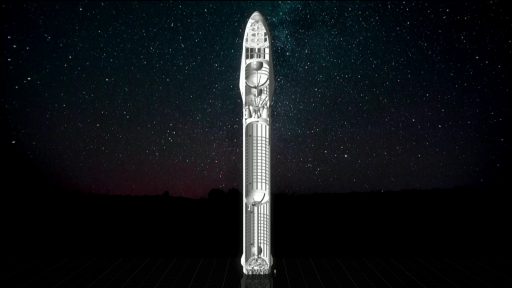
In choosing a methane-fueled engine design, SpaceX stepped away from the well-proven Kerosene-LOX combination used on the company’s Merlin engine series. Methane-fueled engines are a relatively new development in rocketry, being actively pursued by SpaceX’s Raptor, Blue Origin’s BE-4, Airbus Safran Launchers, and different Russian proposals (none of which is close to flight as of 2016.)
Methane offers a higher performance than Kerosene-fueled engines with a difference in specific impulse on the order of 35 seconds. Although liquid hydrogen would offer an even higher impulse in excess of 450 seconds, it comes at a much higher price.
Compared to LOX/RP-1, Methalox engines have the major advantage of having a much cleaner combustion, eliminating concerns with sooting on the engines especially when looking at regular re-use without significant refurbishment between flights.
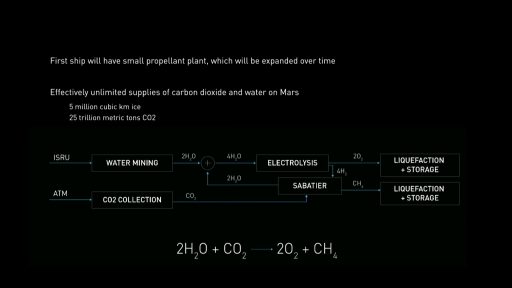
Another consideration of methane for application in a Mars architecture is the possibility of ‘living off the land’ – generating methane with the resources present on Mars. In-Situ Resource Utilization is a widely studied concept for future Mars missions for the generation of oxygen, water and methane using sub-surface water and carbon dioxide present abundantly in the ambient atmosphere on Mars plus sunlight as an energy source.
SpaceX arrived at the choice of a LOX/CH4 engine after ruling out the other two possibilities, namely LOX/RP-1 and LOX/LH2, based on five requirements for the Mars transfer architecture.
LOX and Kerosene have the advantage of being a well-known combination with acceptable performance and liquid densities that support a reasonable vehicle size based on the required propellant tank volume. Cost of propellants and reusability aspects are also satisfactory for LOX/RP-1 and in-orbit propellant transfer could also be accomplished easily. But, the major drawback of Kerosene is that its in-situ production on Mars is next to impossible with the available resources.
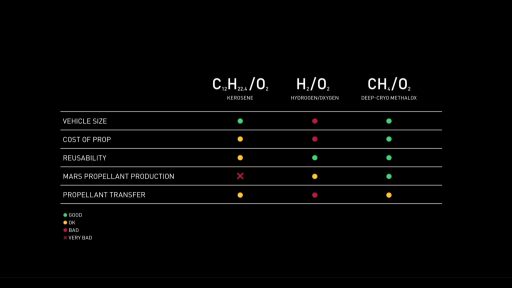
LOX and LH2, also well-proven in rocketry, offer a clean combustion suitable for engine re-use and could be produced easily on Mars through electrolysis of water. But all other factors quickly eliminate LOX/LH2 from the list of possible prop combinations – the low density of LH2 would require extremely large tanks, the cost of LH2 throws economical considerations out the window and in-space refueling is also hard to achieve.
Methalox wins out over the other two candidates in all categories except for in-space propellant transfer which, regardless of propellant combination, is a challenging technological undertaking that will need extensive development efforts to be successful and efficient.
Full-Flow Staged Combustion Cycle
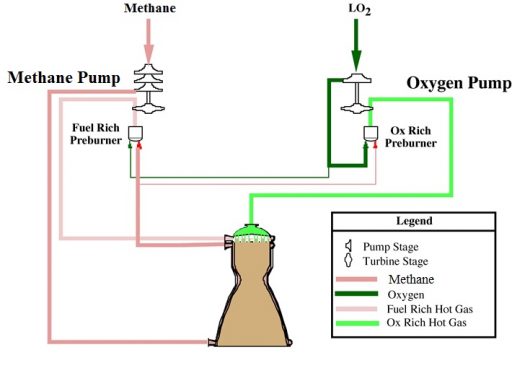
SpaceX’s Raptor employs a Full-Flow Staged Combustion Cycle – a variation of a closed cycle engine that is designed to create a more benign environment within the engine plumbing – an important aspect for reusability, and also provides a higher efficiency than the open cycle engines previously developed by SpaceX.
In a Full-Flow Engine, two separate turbines – one oxygen-rich and one fuel-rich – are responsible for driving the respective fuel and oxidizer turbopumps. The LOX turbine is driven by high-pressure gas generated by combusting nearly 100% of the oxidizer flow with a fraction of the fuel flow in an oxidizer rich preburner. The fuel-side uses the full fuel flow with a small fraction of oxidizer to generate the preburner gas that drives the fuel turbine.
Raptor employs boost pumps on both the fuel and oxidizer sides that operate at a lower speed than the main pumps and create an engine inlet pressure sufficient for the operation of the turbopumps. Typically, boost pumps are driven by tapoff gas from the main pumps, but the exact design used by the Raptor has not been publicly shared.
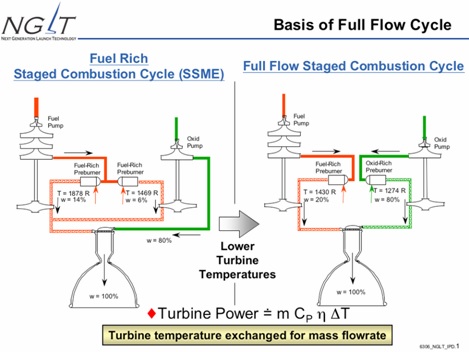
Raptor employs a regenerative cooling system – routing clean methane fuel from the turbine through the engine chamber and nozzle heat exchangers before reaching the preburner and turbine.
By the time both propellant components reach the engine injector they are completely in the gas phase.
The Full-Flow Engine Design has a number of advantages over typical staged combustion engines, first and foremost a higher performance but also factoring in reliability and reuse considerations.
Higher performance is achieved by injecting the propellants into the combustion chamber in a gaseous phase, creating a more rapid reaction.
The use of separate turbines for the fuel and oxidizer turbopump reduces overall turbine power compared to a single-shaft turbopump design where one turbine has to drive both pumps. Also, having the entire propellant flow pass through the turbines eases their cooling and creates a manageable thermal environment. Separate LOX/CH4 pumping equipment eliminates the high-pressure fuel-oxidizer interseal which is a known failure point of traditional engine designs.
The full-flow scheme also creates a more benign environment for the engine plumbing than other designs, increasing the life span of the power units for reuse on many flights.
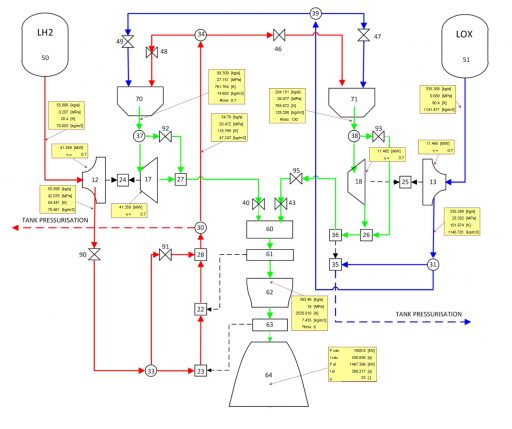
Furthermore, the Full-Flow Cycle provides the option of easily integrating an autogenous tank pressurization system which would eliminate the need for a Helium pressurization system which undoubtedly caused much headache at SpaceX during the teething issues encountered by the Falcon 9.
In the IAC 2016 presentation, Musk specifically highlighted the autogenous pressurization system for the ITS Booster and Spaceship/Tanker to eliminate the high-pressure helium system.
Fuel tank pressurization can be achieved through the use of gas from the fuel line after leaving the regenerative cooling circuit while oxidizer tank pressurant can be obtained from the turbopump discharge, however requiring an additional heat exchanger on one of the preburners.
Raptor is the first Methane-LOX Full-Flow Staged Combustion Engine to be tested. Only two previous Full-Flow designs proceeded into engine testing – the hypergolic-fueled RD-270 developed by Russian engine designer Energomash in the 1960s and tested 27 times with a desired thrust setting of 6,270kN; and the joint NASA / Air Force ‘Integrated Powerhead Demonstrator’ which was run in the 90s and early 2000s to develop a full-flow hydrogen engine.
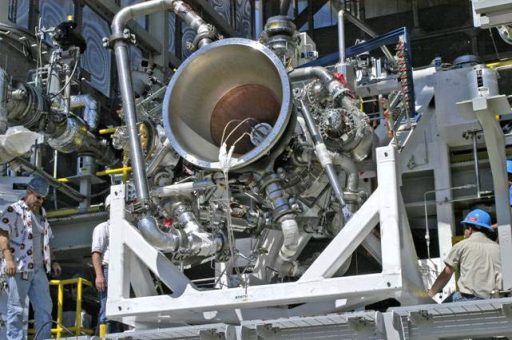
Raptor’s chamber pressure of 300 bar is the highest among all active launch vehicle engines. Russian engine designs were known to be the using the highest chamber pressures for decades owed to advances in metallurgy that allowed for the use of oxygen-rich staged combustion, a technology only recently mastered by U.S. manufacturers.
However, even Russian engines can not come close to Raptor with RD-191 operating at 262.6 bar and the RD-180 used on the Atlas V that reaches a maximum pressure of 267 bar.
Raptor competes favorably with its direct competition, notably Blue Origin’s BE-4 that represents the second high-thrust methane-engine developed on U.S. soil. BE-4 employs an oxygen-rich staged combustion cycle and achieves a baseline sea level thrust of 2,450 Kilonewtons, though that number may rise as BE-4 heads into development testing.
Raptor Development
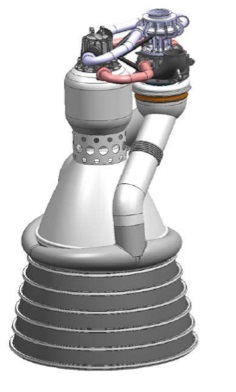
Raptor was first discussed by SpaceX in 2009 when a small team of SpaceX propulsion engineers were working on a new upper stage engine burning LOX/LH2. At the same time, SpaceX was pursuing a route in which a scaled up Merlin engine, referred to as Merlin 2, would power the first stage of future Falcon rockets, continuing to use LOX/RP-1 propellants but switching to a high-performance closed cycle design instead of the open cycle employed by the Merlin 1 series.
Per the 2010 design, the Raptor upper stage engine would have delivered a vacuum thrust of 667 Kilonewtons, baselined for use on a Falcon X or Falcon XX heavy-lift vehicle upper stage.
By early-2012, the Raptor concept was changed radically under a change in direction at SpaceX – abandoning the RP-1/LOX propellant combination for its future launch vehicle and opting for methane-fueled engines for reasons outlined above, including possible methane production using resources on Mars plus advantages of higher performance and better engine environments for re-use.
In late 2012, SpaceX acknowledged the new direction in propulsion technology and confirmed Raptor was now the name for a family of engines to power both, large boosters as well as upper stages optimized for operation in vacuum. The Raptor test program was announced in October 2013 with SpaceX planning to use NASA’s Stennis Space Center in Mississippi for component testing before moving full-scale engine testing to the company’s Rocket Development and Test Facility in McGregor, Texas.
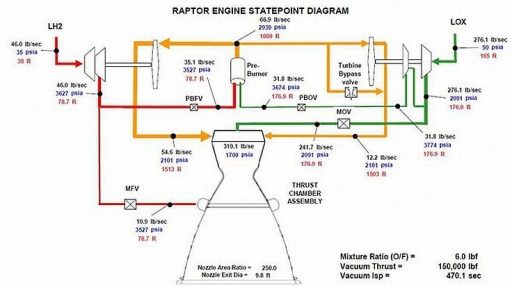
Outfitting of the E2 test stand at Stennis to handle liquid methane was finished by April 2014 and testing of Raptor’s injectors and preburners picked up the next month. The E2 stand is only rated for engines up to 440 Kilonewtons, permitting Raptor’s injectors and preburners to be test fired but not the integrated engine system.
It was in 2013 when first performance data for Raptor was released, starting a lengthy period of confusion because SpaceX spokespeople gave wildly varying performance numbers over the next year and a half. The initial number given for Raptor’s thrust rating was 2,940 Kilonewtons, but in a presentation in early 2014, a much more powerful engine design with a thrust of over 4,400kN was shown. In mid-2014, that number was further increased to a sea level target of nearly seven Meganewtons.
An explanation for the varying thrust targets has been given by Raptor development lead Jeff Thornburg who stated that Raptor is a highly-scalable engine design. It is likely that SpaceX worked out designs for ultra-high performance versions of the Raptor when going through the design iterations of the Mars Colonial Transporter, re-named in 2016 to Interplanetary Transport System.
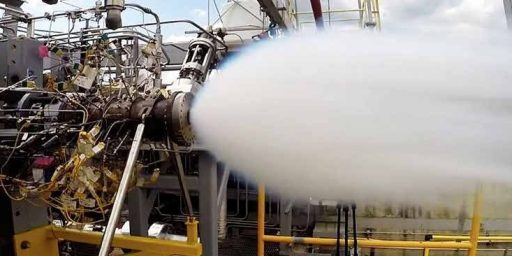
In January 2015, Elon Musk clarified Raptor’s performance to a lower target of 2,300kN which brought up the question of the number of engines SpaceX’s future launch vehicle will require to be able to send 100 metric tons of payload to the surface of Mars – a goal that remained consistent despite the changing performance numbers on the Raptor.
Stennis testing in 2014 successfully demonstrated the engine injectors and oxygen preburner testing picked up in 2015. A total of 76 hot fires were executed in a campaign between April and August 2015 for a cumulative test time of several hundred seconds. Operations at Stennis concluded in 2015, though SpaceX may return to the facility for future testing of Raptor variations.
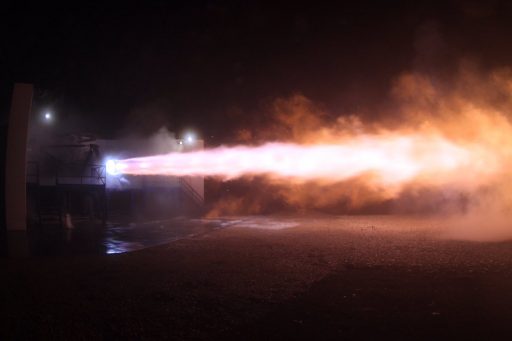
The first prototype Raptor reached SpaceX’s Texas facility in August 2016 as spotted by observers who keep close watch on activities at the base. SpaceX confirmed that a Raptor was delivered to McGregor, though some questions arose whether the engine was a scaled-down or full-scale version and whether initial testing would run the engine at lower pressures.
The first test firing of Raptor was performed on September 25, 2016 in the evening hours local time. This test was timed perfectly to coincide with Musk’s speech at the International Astronautical Congress two days later where he was to reveal a detailed roadmap for SpaceX’s Mars Exploration and Settlement plans.
U.S. Air Force Contract
SpaceX first contacted the U.S. Air Force in 2011 to explore whether the Air Force was interested in a methane-fueled engine to compete with the established LOX-Kerosene technology used by the majority of active launchers. However, development on Raptor continued under full funding and full control by SpaceX until January 2016 when the U.S. Air Force awarded a development contract to SpaceX.
The $100 million contract requires double-matching by SpaceX – $33.6 million are provided by the Air Force while SpaceX allocates $67.3 million for the development of a prototype version of a Raptor upper stage engine suitable for use on the Falcon 9 and Falcon Heavy launch vehicles. The contract covers a period until 2018 and includes development work on the engine, the production of a prototype and performance testing carried out at Stennis.
A Raptor variant flying on Falcon 9 / Falcon Heavy will likely represent a scaled-down version of the ITS Raptor Vac design.
